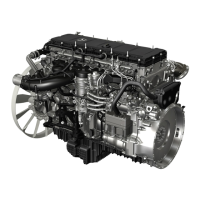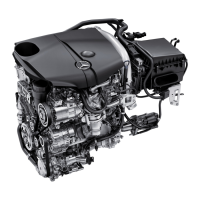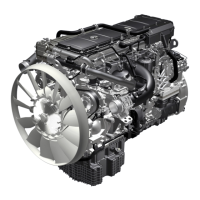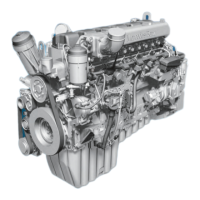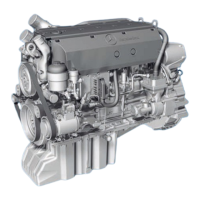Exhaust system
36
Combustion
b
Introduction of the New V12 Biturbo Engine, M 279 AMG
Exhaust treatment
The task of the exhaust treatment system is to
reduce exhaust emissions.
To do so, the catalytic converters, for example,
must be quickly brought up to operating
temperature so that exh
aust emissions during cold
starting are reduced.
The following components and subsystems are
involved in exhaust treatment:
•
Firewall catalytic converters
• Secondary air injection
• Transmission shift delay
• Monitoring of catalytic converter efficiency
Firewall catalytic converters
The pollutants in the exhaust gases emitted by the
engine are chemically converted by the near-engine
mounted firewall catalytic converters (three-way
catalytic converters) at
λ=1.
By oxidation carbon monoxide is converted into
carbon
dioxide (CO
2
) and hydrocarbon into water
(H
2
O) + carbon dioxide.
By chemical reduction the nitrogen oxides are
converted into nitrogen (N
2
) + carbon dioxide.
Secondary air injection
Secondary air injection is a measure for ensuring
that emissions limits are complied with during
(cold) engine starts.
Function requirements for secondary air injection
• Coolant temperature >-10 °C and <35 °C
• Coolant temperature >7 °C and <35 °C
(with code (494) USA version)
• Engine speed <2500 rpm
• Engine at idle or partial load
Secondary air injection heats the firewall catalytic
converters to
their operating temper
ature more
quickly after engine start, thereby improving the
exhaust emission values during warm-up.
The ME-SFI control unit controls the secondary air
injection on th
e basis of the following sensors:
• Pressure sensor downstream of throttle valve,
engine load
• Coolant temperature sensor
• Crankshaft Hall sensor, engine speed
• Charge air temperature sensor
The injected air is provided by the electric air pump,
which is actuated
by the ME-SFI control
unit via the
secondary air injection relay.
When the air pump 1 and 2 switchover valves are
ac
tuated by a ground signal from the ME-SFI control
unit, they allow the vacuum from the variable intake
manifold to pass through to the air shutoff valves.
These open and the injected air from the electric air
pump is injected into the exhaust ports of the
cylinder heads.
The injected air reacts with the hot exhaust gases in
the exhaust ports and firewall
catalytic converters.
The carbon monoxide and hydrocarbon are oxidized
(afterburning).
This afterburning causes an increase in the exhaust
temperature (exothermic reaction), which
addi
tionally heats the firewall catalytic converters.
– This printout will not be recorded by the update service. Status: 06 / 2012 –
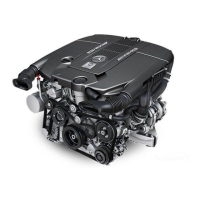
